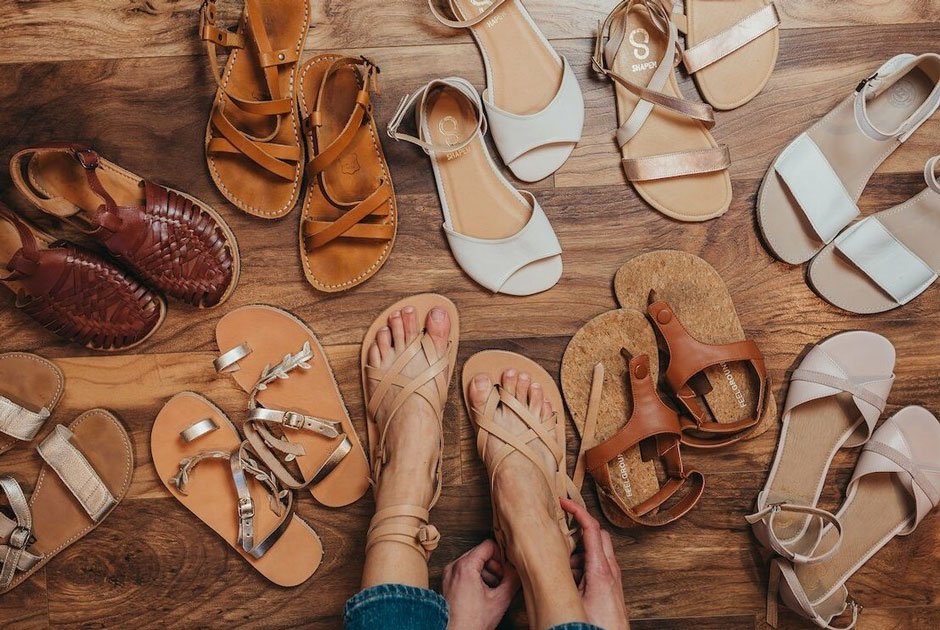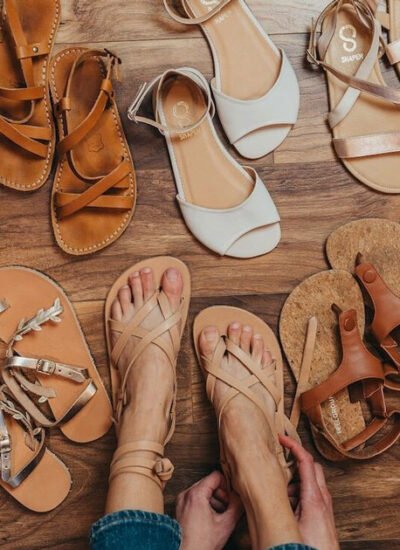 Minimal sandals don’t get much room to hide mistakes. They’re exposed—visually and structurally. That’s what makes a well-executed pair impressive. When there’s barely anything to them, every element needs to pull its weight. For sandals meant to do more than look good poolside, it’s not the trend that matters. It’s the feel on foot, hour after hour.
Minimal sandals don’t get much room to hide mistakes. They’re exposed—visually and structurally. That’s what makes a well-executed pair impressive. When there’s barely anything to them, every element needs to pull its weight. For sandals meant to do more than look good poolside, it’s not the trend that matters. It’s the feel on foot, hour after hour.
Why Walkability Isn’t Just for Sneakers
People expect sneakers to go the distance. Sandals rarely get that same benefit of the doubt. But minimal doesn’t have to mean delicate. The smartest pairs deliver structure, security, and comfort in a fraction of the real estate. The key is how that limited space is used.
Walkable sandals start with intent. The design process doesn’t just focus on how they’ll look standing still. There’s a real effort behind how they flex, where pressure lands, and how the straps behave in motion. That extra thinking doesn’t take away from their simplicity—it sharpens it.
A Good Sole Does More Than Grip
The bottom of a minimal sandal has to do double duty. It needs to protect from rough surfaces, but still feel connected to the ground. Flat rubber sheets might look clean, but they don’t absorb impact or support natural gait.
Higher-quality soles use a mix of materials to strike a balance. Some pair soft leather tops with rubber undersides to get both grip and flex. Others sculpt the base to follow foot curves instead of forcing them into generic shapes. The best designs create a stable landing pad that doesn’t interrupt stride.
One overlooked perk of smart sole design is silence. Walkable sandals shouldn’t squeak, clack, or slap with each step. That often comes down to how the sole is finished and how it meets the ground. The quieter it moves, the better it usually wears.
What Keeps Straps From Turning Annoying
The magic of minimal footwear is often in the strapping. Good straps guide movement without pinching or slipping. Poorly placed ones can make even short walks feel like a chore.
It’s all about keeping the sandals aligned, especially once the foot heats up or swells slightly. A strap that holds well early in the day but cuts in later isn’t doing its job. Flexible straps, soft leather linings, and clever anchoring points all help maintain comfort without needing constant adjustment.
Designers who understand motion think about flex zones. If a strap falls across a bending point, it should move with the foot. Materials like soft-grain leather or waxed cotton tape often do better in this area than synthetic straps that stay stiff no matter what.
One Feature Makes All the Difference
The toe loop is a small detail with a big impact. For styles that rely on minimal uppers, a loop can give the foot something to grip, without making it work too hard to stay in place.
In a solid design, it’s not just decoration. The loop should support the natural toe spread that happens during walking. If it’s too tight, too loose, or poorly placed, it ends up being more annoying than useful.
One example that gets it right is the recent rise of leather toe loop sandals for men. These pair clean silhouettes with subtle engineering, using the loop to improve balance and reduce midfoot tension. It may be a quiet design win, but it’s one that shows up with every step.
Signs of a Walk-Ready Pair
These clues don’t need a label to spot. When trying on a pair of minimal sandals, pay attention to:
- If the heel feels supported, it’s off to a good start.
- Check strap stability. Straps should hold steady but never dig or chafe.
- The sole should be flexible enough to move with the foot, not fold in strange places.
- Arch response is very important. Even in flat styles, there should be some shape underfoot.
- Sandals should feel good barefoot—no break-in excuses
When all these parts work together, minimal doesn’t mean compromise. It implies freedom without giving up function.
The Feel-First Difference
Minimal sandals earn their place in a rotation when they deliver comfort without fuss. No gimmicks. No overbuilt padding. Just a clean design that follows the shape of the body. That’s where real walkability lives.
The difference shows in how long they stay on after reaching the destination. When a pair doesn’t need to be kicked off the second someone sits down, the design’s doing more than just holding things together. It’s moving in sync. That’s the kind of minimal that deserves space in every closet.





Leave a Reply